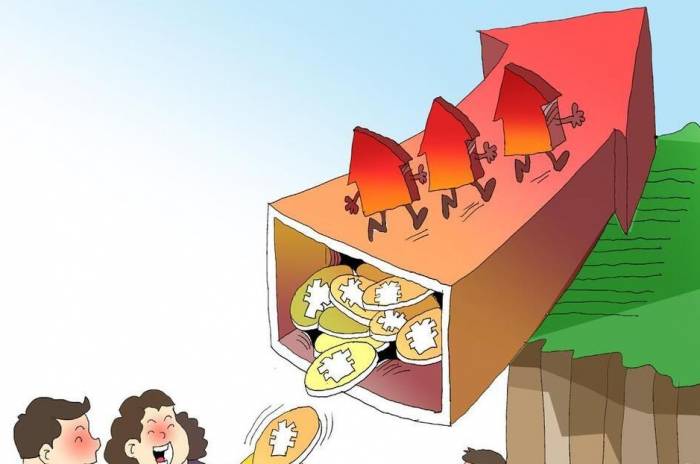During the holidays, everyone's focus has turned to the securities and artificial intelligence concepts, as well as Huawei concepts, semiconductors, chips, and other hot sectors, especially the post-holiday trend of the chip concept and semiconductor sector, which is expected to be promising. Today's article will discuss these two sectors with everyone, to see if they can carry the banner of A-share rebound after the Double Festivals?
Firstly, the semiconductor and chip sectors, as a part of the main capital speculation, everyone must understand the context of the main capital speculation.
1. Many friends who speculate in stocks do not track the context of the main capital speculation, which sometimes leads to being caught in a dilemma.
The current context of A-share speculation is big finance, central enterprises, chips, semiconductors, artificial intelligence, and now the Huawei Star Flash concept is being speculated.
These varieties are all speculated back and forth. If you can grasp the low point and make a short-term rebound, you can still make some coffee money. Other sectors and concepts are mostly short-term situations and do not have continuity. When you see the rise and chase the rise, the speculators have already started to escape.
Advertisement
2. From the current overall strategy, semiconductors and chips are the leading groups of scientific and technological development. No matter how hot the Huawei concept is, it is still a concept because Huawei itself is not listed on the A-share market, so it lacks a leader, just like artificial intelligence. It is speculated very much, but who can tell who the leader is? A-shares like to speculate on concepts.
The chip and semiconductor concepts are the varieties that the main capital of A-shares has focused on speculating since the first half of this year. To some extent, they can be regarded as the second battlefield opened by the main capital for the purpose of activating the A-share market, which is a relay to big finance and central enterprises.Second, let's now take a look at the short-term trends of the chip and semiconductor sectors to analyze and judge their performance on October 9th. We will refer to the chip and semiconductor indices for an analytical forecast.
1. The trend of the chip index. The daily trend of the chip index has been maintained quite well. After a short-term breakthrough of 1,500 points on September 22, a rapid rebound occurred, and on September 28, a gap rebound trend was formed, with the index rising by 2.02%.
Looking at its 60-minute trend, there will be a low opening on October 9th, and the entire morning will be a trend of fluctuation and adjustment, mainly because all the technical indicators on this trend chart are overbought, and adjustments are needed on the minute-level trend.
From the daily trend perspective, after the adjustment on the 9th, there will still be an attack process, which is mainly reflected in the chip index closing above the annual line of 1,543.26 points on September 28, at 1,543.67 points. After the adjustment on the 9th, it will still attack the 20-day moving average of 1,555.31 points.
Everyone should look at the trend of the sector from the overall trend of the market, after all, there is no complete egg under the overturned nest, do not believe those who say to focus on individual stocks rather than the overall market. Today's analysis is mainly limited to the trend on October 9th, and does not discuss their medium and short-term trends.
2. The trend of the semiconductor index. The trend of the semiconductor and chip indices is similar, both are done by a main force group, in detail, the trend of the semiconductor index will be slightly stronger in the later market.
The main reason is that the current semiconductor index is farther away from its 20-day moving average than the chip index. The current closing point of the semiconductor index is at 2,155.22 points, and the position of the 20-day moving average is at 2,204.8 points.Thirdly, the semiconductor and chip sectors are unlikely to lead the market rebound after the holiday. This is due to the following reasons:

1. Insufficient weight: As mentioned earlier, these two sectors lack the support of large-cap stocks, and most of them are small and medium-cap varieties. They do not have a strong enough presence to significantly impact the overall market and other indices.
2. Pessimistic outlook on the first day after the holiday: The trend of these two sectors on the first day after the holiday is not optimistic. They are almost identical in the 60-minute trend, with technical indicators showing severe overbought conditions. Most of them are expected to open low and fluctuate, with the subsequent trend depending on the overall market situation.
3. Speculative activities by major funds in these sectors ended in April and have been in a state of selling out since then. Stocks without substantial performance support and with excessively inflated prices pose significant risks. It is challenging to find potential stocks, as most are currently being traded back and forth by major funds themselves. Investors should also be wary of stocks that have been pumped up, which may suddenly experience an unanticipated sharp decline.
4. From a medium-term perspective, the semiconductor index is still digesting the negative impact of the triple top formed in April of this year. The index fell from its highest point of 2920.48 in the month to 2062.97 on August 25, a decline of 29.4%. Looking at the monthly trend, it still lacks a bottoming and base-building process. When operating, one should adopt a short-term mindset and not get overly involved. The trend of the chip index is also similar.
Comments